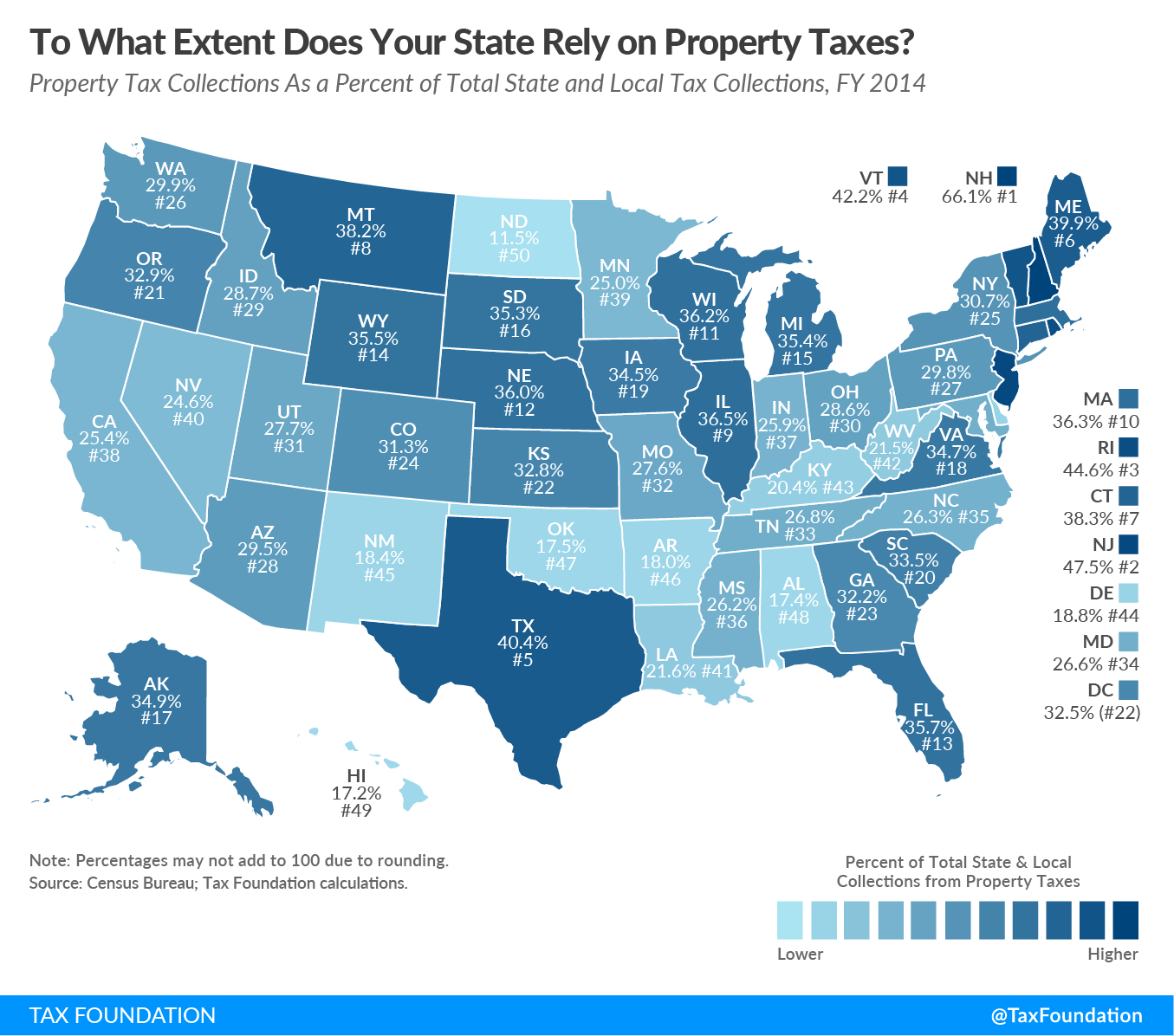Property taxes are an important revenue source for state and local governments. In fiscal year 2014 (the most recent data available), property taxes were the largest source of state and local taxA tax is a mandatory payment or charge collected by local, state, and national governments from individuals or businesses to cover the costs of general government services, goods, and activities. collections, comprising 31.3 percent.
As a colleague explained last year, states tax real property in a variety of ways. Some states impose a rate or millage on the full fair market value of the property, while others impose it on a given percentage of the market value or even based on income potential.
Reliance on property taxes also varies across states. North Dakota (which derives much of its revenue from severance taxes) relies the least on property taxes, at only 11.5 percent of its state and local tax collections. New Hampshire, by contrast, relies most heavily on property taxes, at 66.1 percent of total state and local tax collections.
However, a heavy reliance on any given tax does not equate to a high tax burden overall. New Hampshire, for example, has the highest reliance on property taxes but the 44th lowest tax burden in the country, as the state does not levy a sales tax or a tax on wage income. Texas, the state with the fifth highest reliance on property taxes, has the 46th lowest tax burden in the country. Texas does not levy a corporate or individual income tax (though it does have a harmful business tax in the form of the Margin Tax).
Note: This is the first in a four-part map series in which we will examine the primary sources of state and local tax collections. Other maps in this series are linked below.
